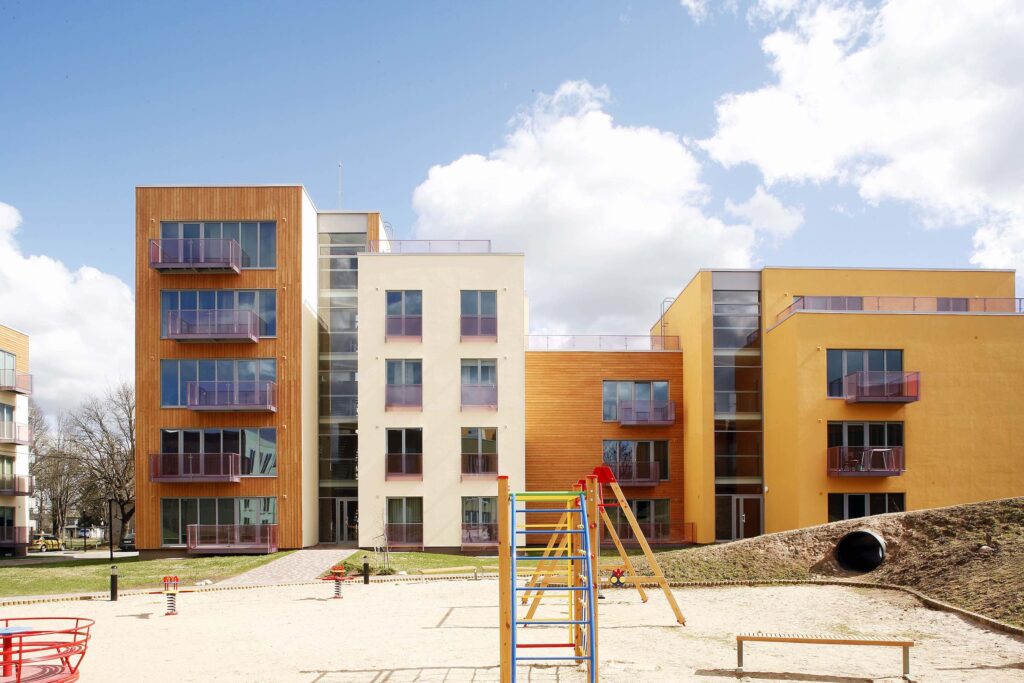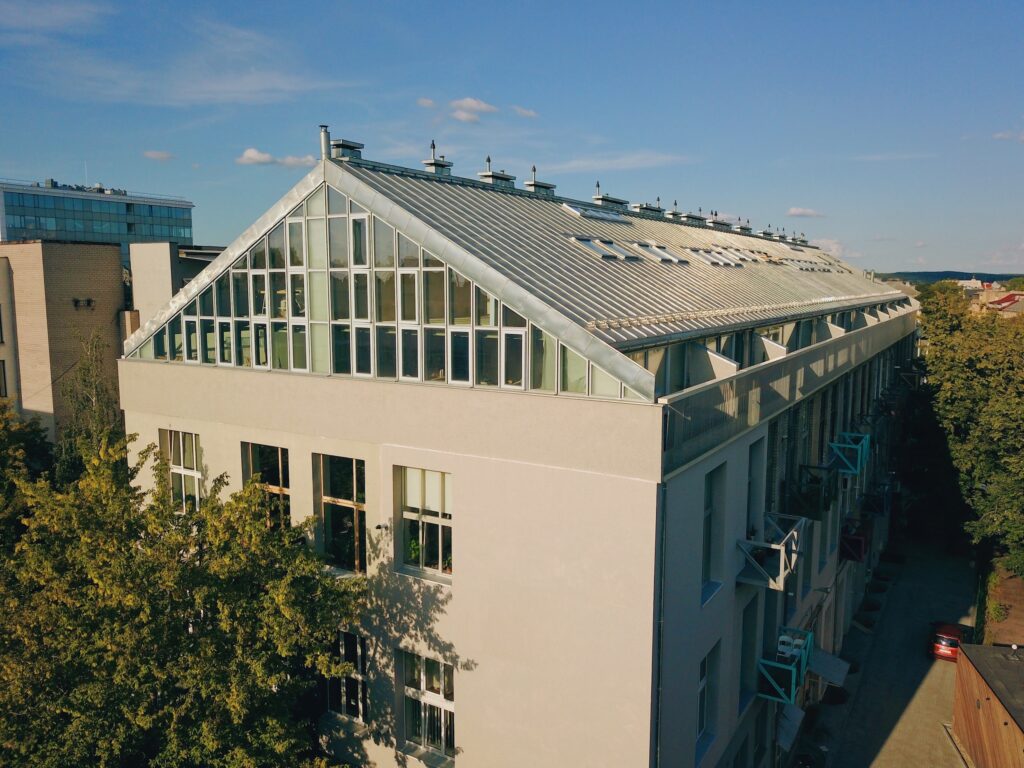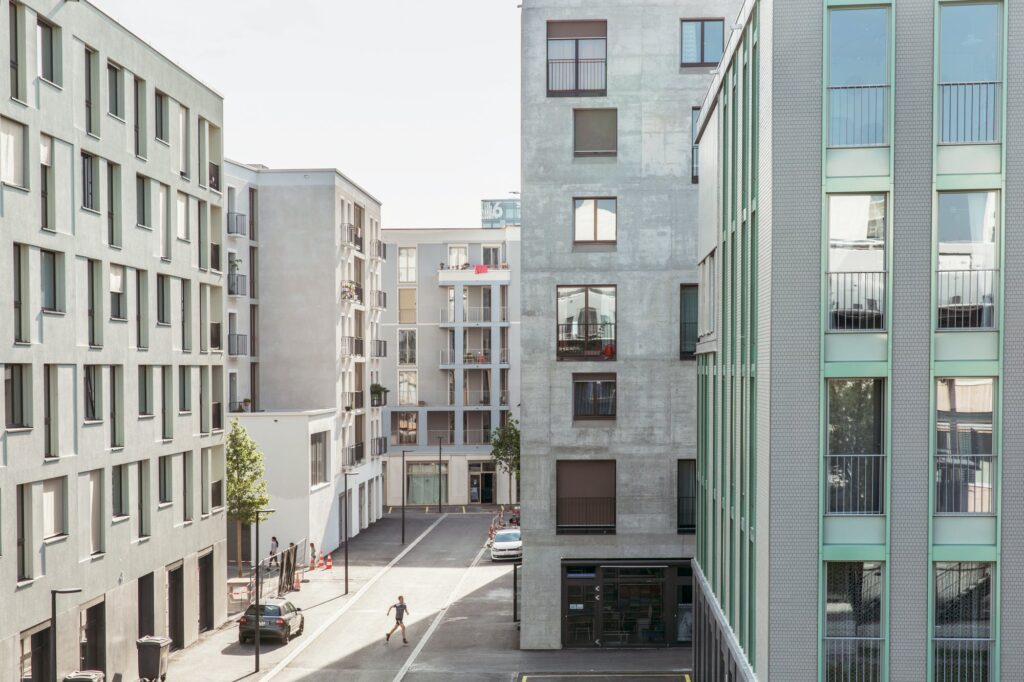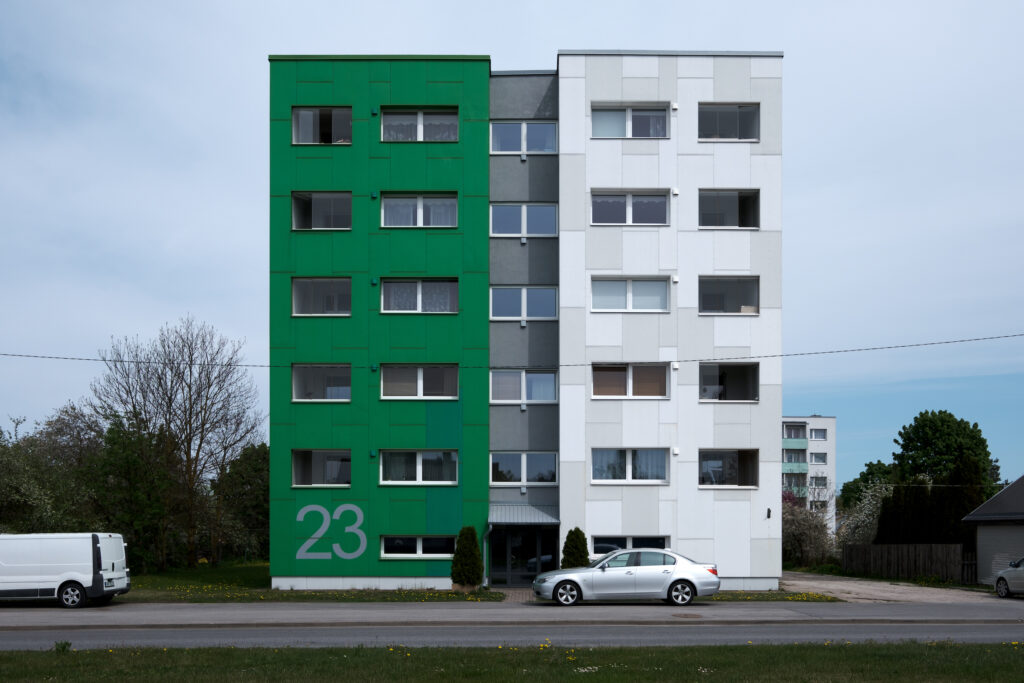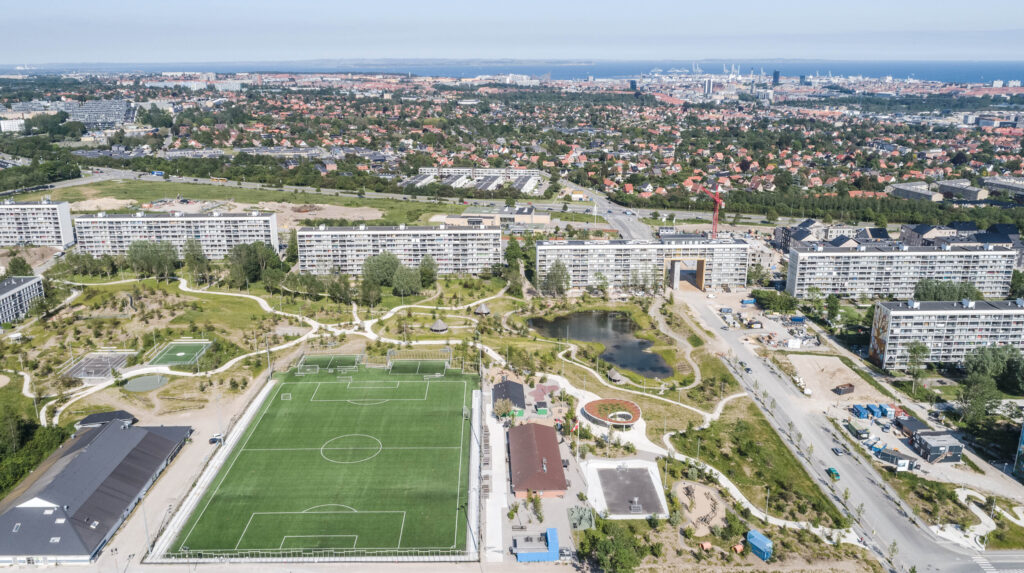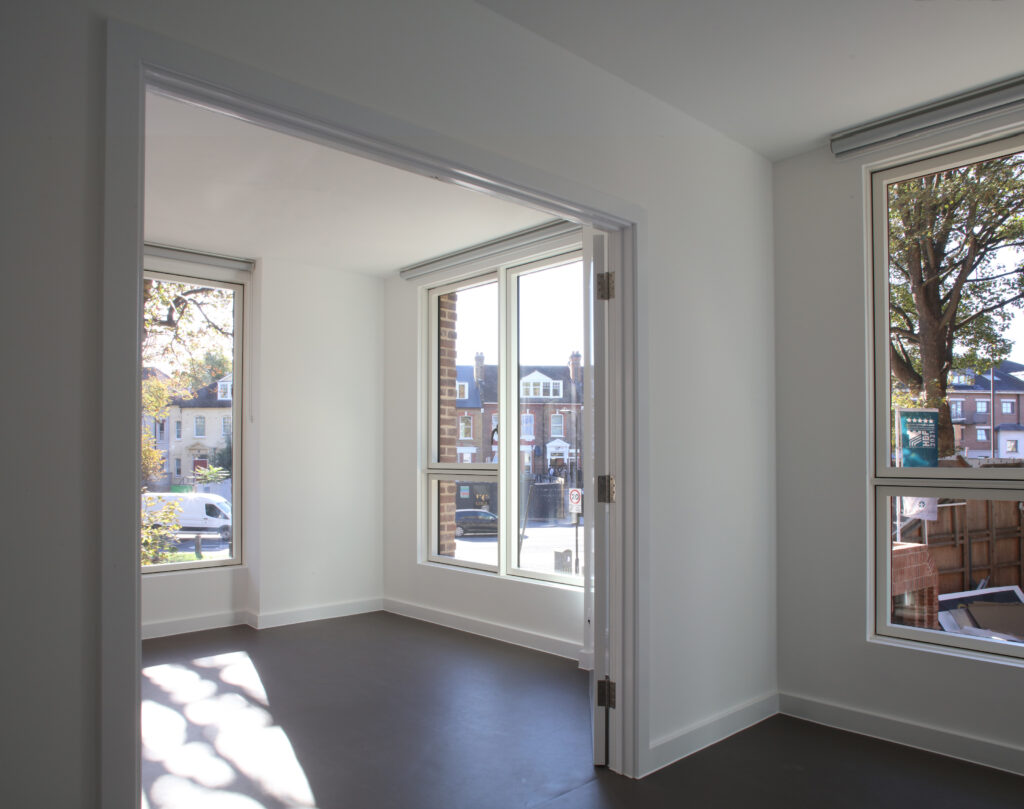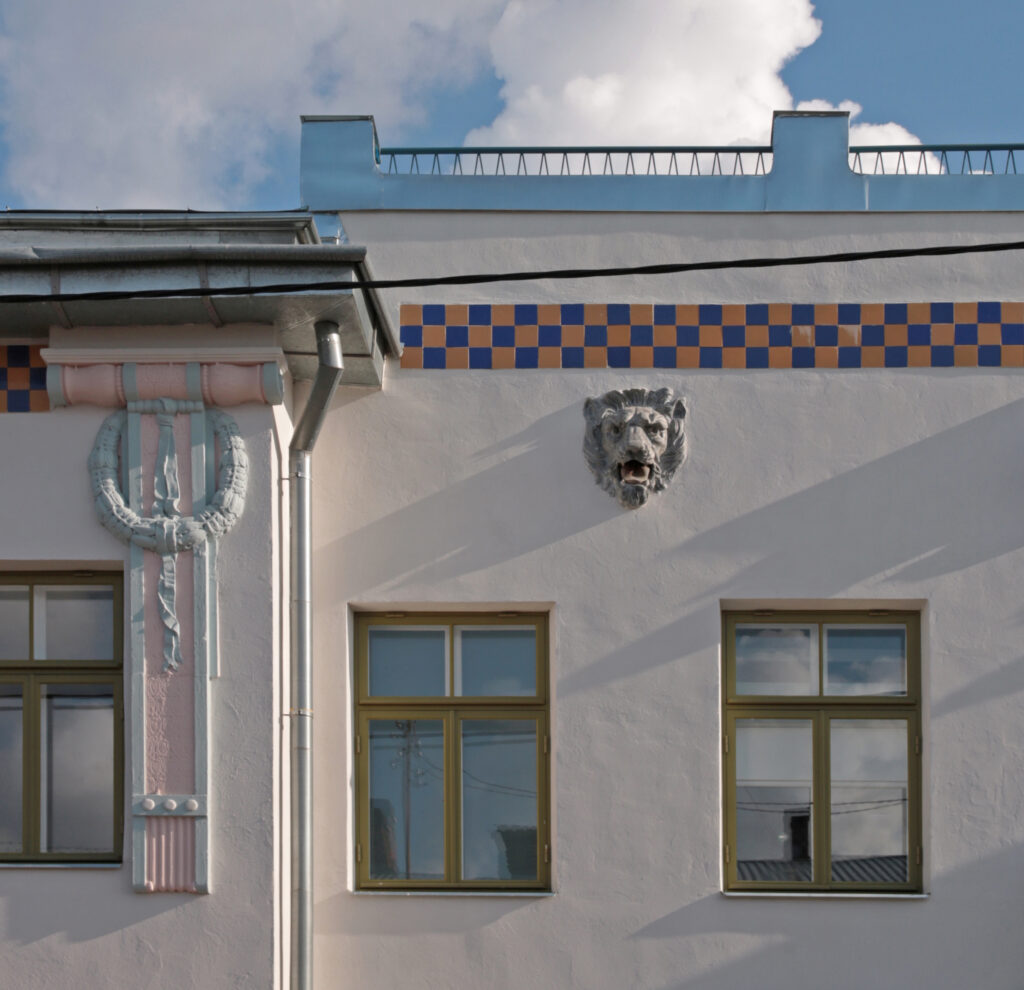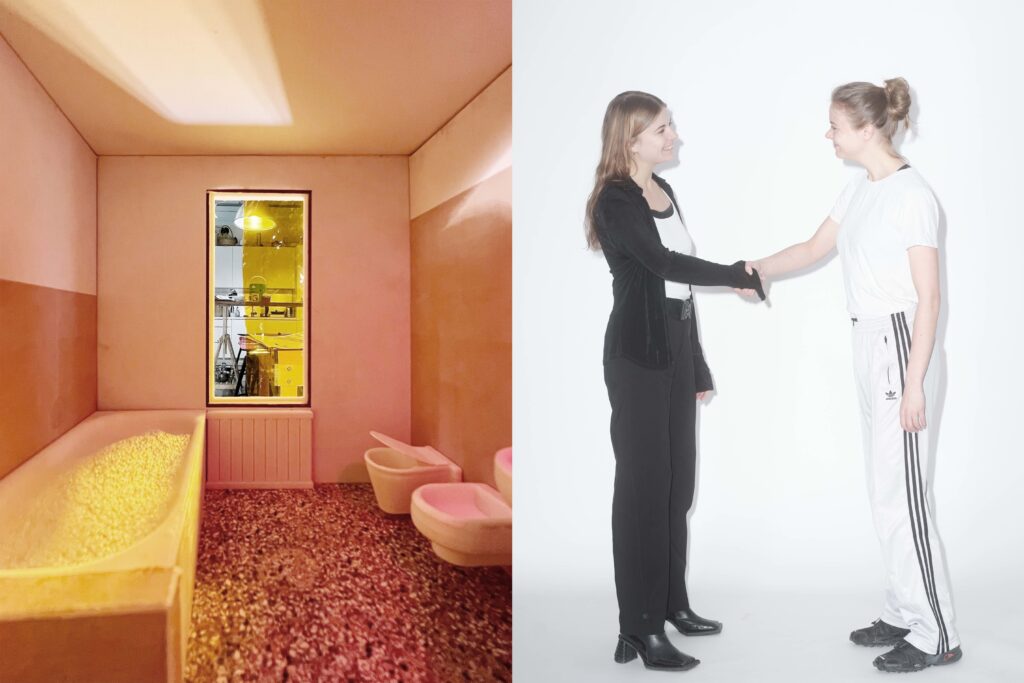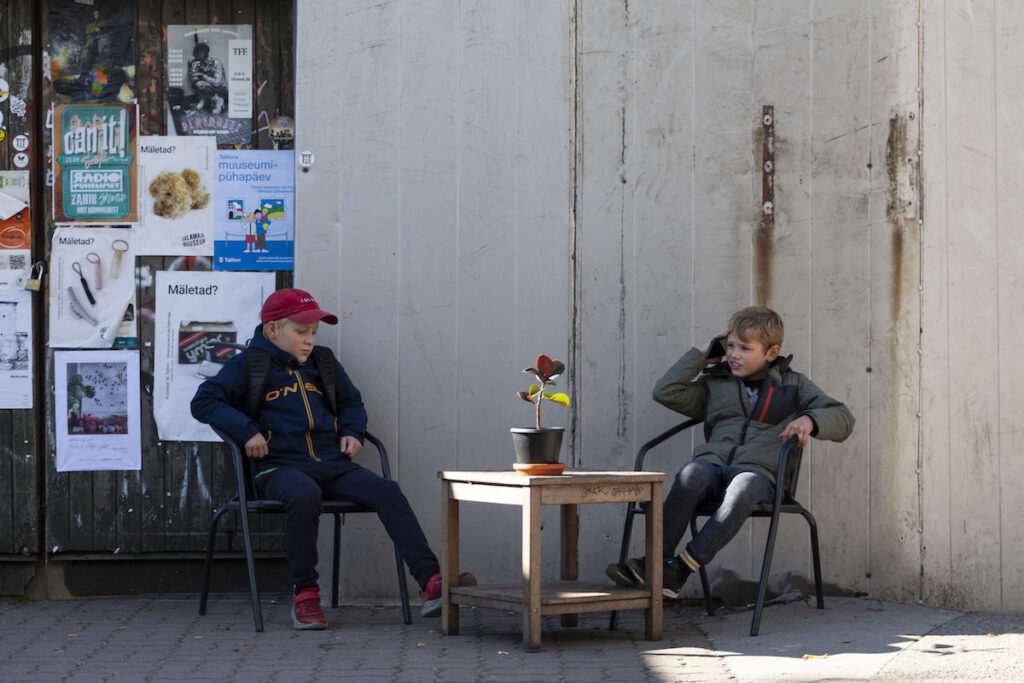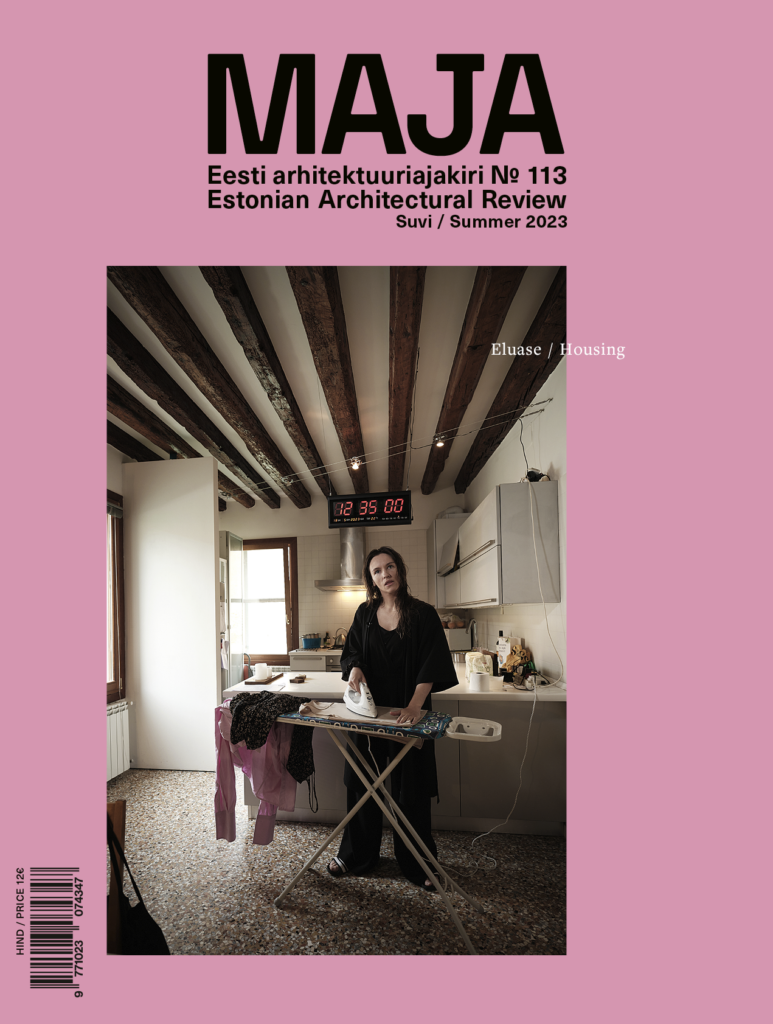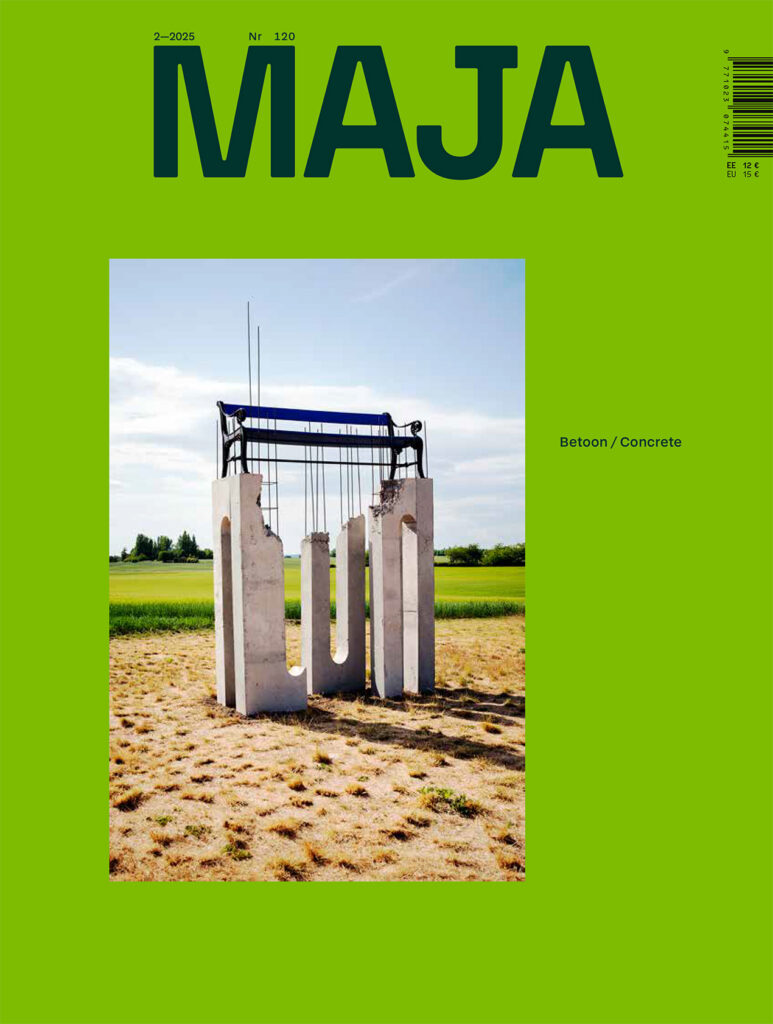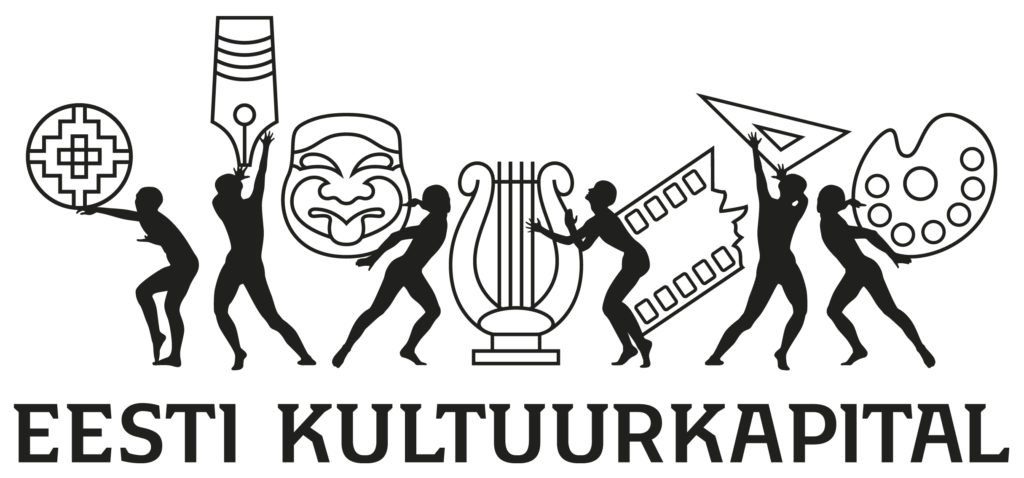Summer 2023: Housing
Elo Kiivet revisits Tulbi-Veeriku quarter in Tartu where the friction between these two dimensions has given rise to one of the most praised new neighbourhoods of early noughties in Estonia.
In Vilnius, a group of friends came together to acquire the top floor of a Soviet-era factory building. They later cooperatively developed it into their homes. Laura Linsi talks to Mantas Peteraitis about how the project came to be.
Community-led housing development is leading the way from speculati ve to non-profit housing construction models. Eneli Kleemann and Helena Rummo discuss the spatial possibilities that come with it.
Improving the architectural quality of the existing housing stock requires integrating engineering solutions with architectural decisions. In the ongoing renovation marathon, it is important to discuss what kind of added value could be drawn from the existing to unleash the full spatial potential of renovation and to create good user-friendly spaces, writes Diana Drobot.
So far, residential renovation has mainly targeted single buildings, but the idea of area-based renovation is becoming increasingly widespread.
The Danish architect Mette Johanne Hübschmann analyses the domestic interiors of similarly speculative housing development from a feminist standpoint.
When it comes to housing policy, we talk about something very dear to all of us—our homes. Now is a good time to review what we have already accomplished, and to detect the main shortcomings and obstacles but also the missed opportunities in developing the housing sector. The topic is discussed by the Head of Housing Policy of the Ministry of Climate Veronika Valk-Siska.
Why not set a higher value on dispersal? Instead of living in just one place, and trying in vain to gather yourself together there, why not have five or six rooms dotted about Paris?
As a country that has experienced Europe’s biggest increase in real estate prices, we will soon face the question: how to avoid reaching the top in segregation and spatial inequality too? Hannes Aava explores.
ARCHITECTURE AWARDS


